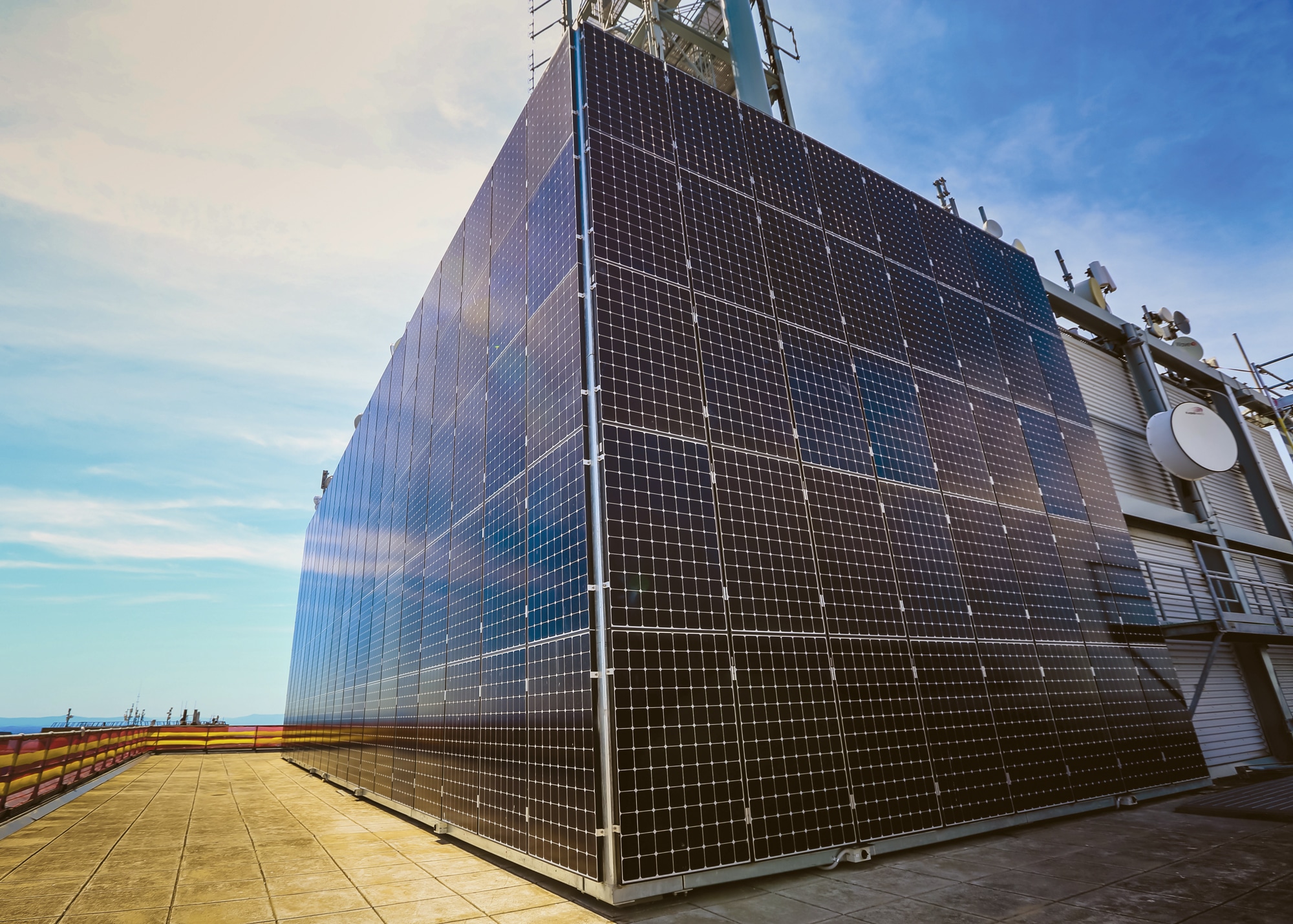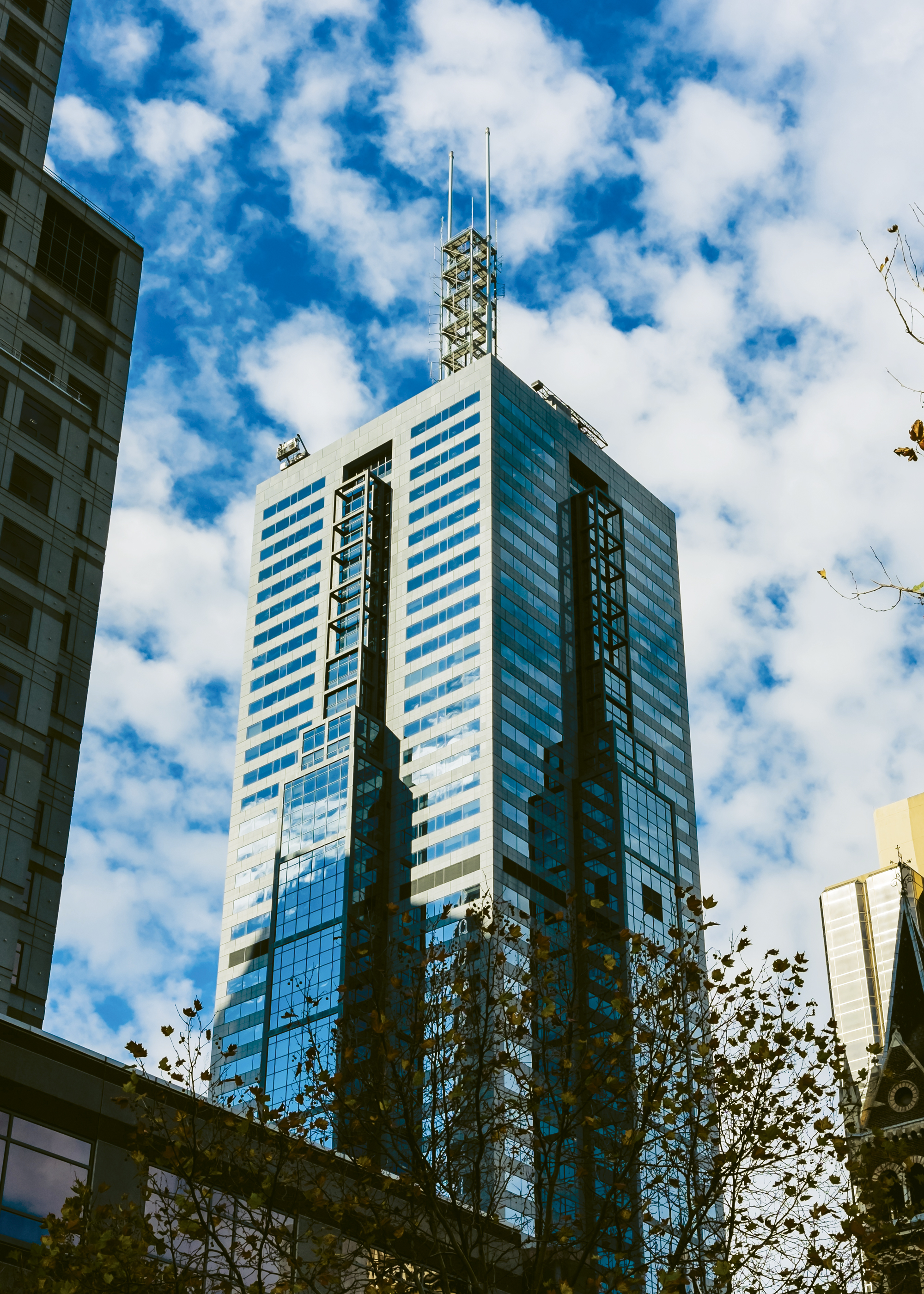
This Melbourne skyscraper became home to 180 solar panels, further proving the building owners’ strong commitment to sustainability. [Photo: Courtesy of 101 Collins]
101 Collins Street is home to the largest and highest private commercial solar PV installation
in Melbourne
PROJECT
LOCATION
North Melbourne, Victoria
SIZE
180 panels
SYSTEM SIZE
59.6 kW
TOTAL OFFICE AREA
860,670 square feet
OUTPUT
Approximately 60,000 kWh
COMPLETION
October 2015
Rising 57 stories into the sky, 101 Collins Street (circa 1990s) continues to change with the times—most recently, with a massive solar project you might not expect for such a large, prestigious building. But in Australia, sustainability is of utmost importance, and this project is just one example of what’s possible.
“The commercial office market in Australia is highly focused on sustainable ratings,” says Ross Boreham, senior manager of engineering and sustainability for 101 Collins. In fact, disclosing commercial office buildings’ “star” ratings (which range from 0 to 6) under the National Australian Built Environment Rating System (NABERS) is mandatory under federal law. “It is important for significant, prestige buildings to be positioned in the market with a high star rating. We are presently a four-star energy rated building, which is highly regarded for a building of this size and age.”

Melbourne’s prestigious 57-story 101 Collins Street building is 98% occupied. [Photo: Courtesy of 101 Collins]
101 Collins is currently the fourth tallest building in Australia when measured up to the tallest architectural point—its 60-meter-tall spire. It’s considered Melbourne’s most prestigious commercial address, according to Commissioner Cathy Oke, chair of the City of Melbourne’s Environment Portfolio, and it’s 98% occupied—home to tenants like JP Morgan, Goldman Sachs, and Morgan Stanley.
The building’s owners and management team take sustainability seriously and wanted to keep making strides to improve energy efficiency in particular, so they began to explore the possibilities of solar. With the solar PV system, they knew they could generate carbon-free energy for years to come. Several options were explored, including installing traditional solar panels at a lower level, affixing them on the building’s vertical facade or even trying photovoltaic window film. But after years of deliberation, timing and pricing pushed them toward solar.

[Photo: Courtesy of 101 Collins]
Boreham says the “set and forget system” of solar was a no-brainer, especially as it worked on this multi-story level in ways that wind power never could. All told, 180 panels were installed, each at 330 watts output. It’s the largest and highest private commercial solar PV installation in Melbourne. “It will operate for well over 25 years with little or nil maintenance,” he says.
Initial tests assessed wind strength to see how secure the panels needed to be, but further testing found that the panels needed to be significantly more secure. While the team received capital works approval in January 2015, getting the design and engineering took seven months and the panels were in storage for months before installation could commence at level 56.

[Photo: Courtesy of 101 Collins]
Yes, adding solar to a skyscraper was not without its problems. “The biggest challenge was designing for the wind forces on the Solar PV installation at 610 feet above ground level,” Boreham says. To solve the issue, the team placed the panels vertically against the existing structure to capture the sun’s rays while taking up minimal roof space. The solar PV system essentially acted as the new facade. And it looks great, too.
Finally, the sun is shining on 101 Collins. The panels generate 47,000 kWh of electricity per year, or more than the annual amount of electricity used in over 12 houses. This sustainable building also has LED and motion sensor lighting, new high efficiency VSD chillers, an upgraded BMS, and double glazed windows with surface coated tempered glass to increase thermal efficiency. The project is thought to be the highest in the southern hemisphere, as it’s installed on the 56th level of the building.
